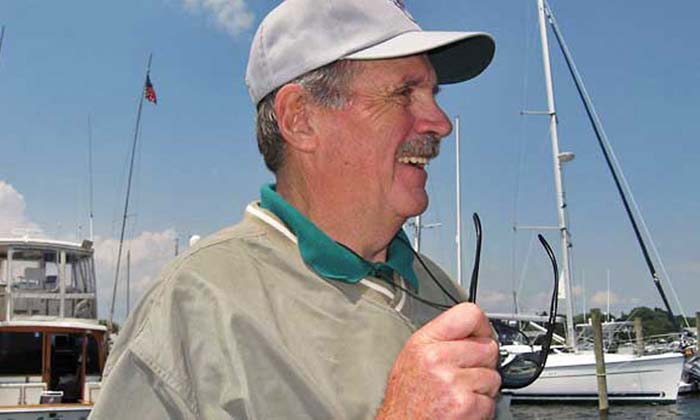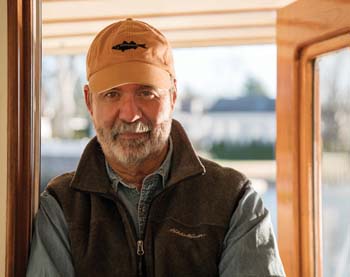
Capt. Al Anderson a lifetime tagging fish, including bluefin tuna. An Outdoor Channel image.
By Skip Clement
Some people think that it’s not all about them, they believe they have a responsibility to others and the planet they live on.
When Al Anderson began tagging and releasing large portions of his catch, other skippers were baffled by this charter captain who was sacrificing economic gain for scientific data. But Anderson was convinced his practices would make a difference in the future of fisheries, especially of those species most desired by his own customers and other anglers in the Atlantic.
Wandering Marvels
Capt. Al Anderson has boosted our understanding of bluefin tuna through his prolific tagging efforts
by William Sisson / Anglers Journal / June 8, 2018

Anglers Journal’s Editor-In-Chief William Sisson. An Anglers Journal image.
[dropcap]T[/dropcap]he bluefin is the heavyweight wanderer of the tuna clan. A fully mature Atlantic bluefin, if allowed to attain its age potential of 30-plus years, can reach colossal proportions. The largest rod-and-reel bluefin ever recorded weighed nearly 1,500 pounds.
Prized by anglers for their fighting ability, these pelagic wonders roam the waters of the North Atlantic and are pursued avidly throughout their size range, from school fish to giants. But it’s the bluefin tuna’s commercial value that has been its undoing, as rod-and-reel, harpoon, longline and oceangoing commercial fishermen from as far away as Japan pursue them across the Atlantic to feed a ravenous sushi market.
Bluefin went from being considered unpalatable — most ending up as cat food — with little or no commercial value prior to 1970 to bringing the highest market prices of any fish in the 1990s. It is estimated that the value of commercially caught bluefin increased 10,000 percent in that period, according to a story in The Atlantic magazine.
You might think that a fish so revered by sport anglers and of such great commercial value would rate intense scientific study, and that organized tagging of bluefin to gather information about their spawning habits and transoceanic migrations would naturally be high on the list of such programs. If so, you might be surprised to learn that a single charter captain from Narragansett, Rhode Island, was responsible for 90 percent of the Atlantic bluefin tuna tagged and released over the last 40 years — somewhere in the neighborhood of 4,700 fish.
About
Anglers Journal celebrates the best writing, photography, illustration, design and sporting art on the topic of fishing. Come join some of the most prolific fishing editors and writers in the industry for the best angling experience on the water.


